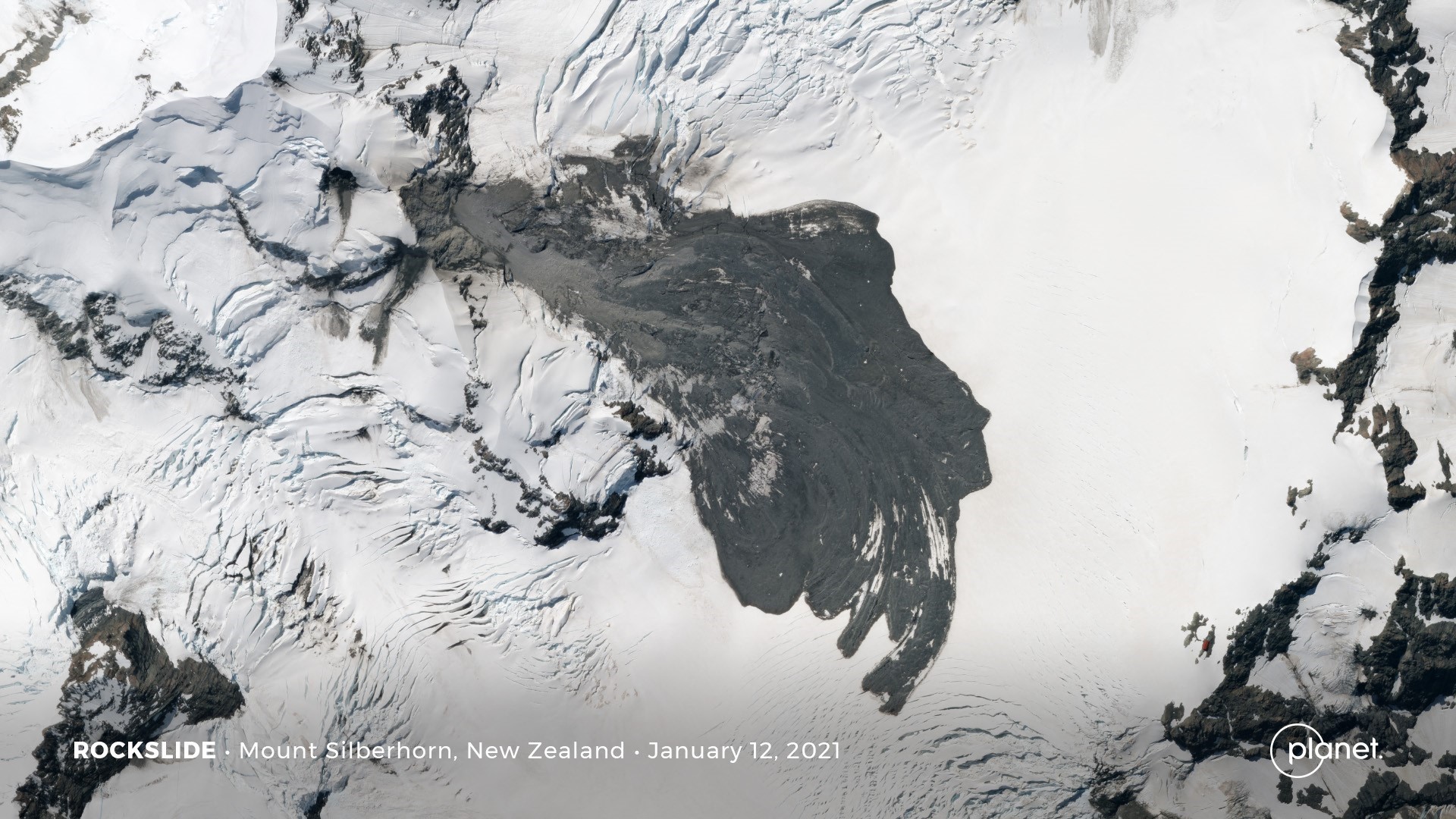19 January 2021
A sensational high resolution satellite image of the Mount Silberhorn rock avalanche
Posted by Dave Petley
A sensational high resolution satellite image of the Mount Silberhorn rock avalanche
On 31 December 2020 pilots from Mount Cook Ski Planes & Helicopters in New Zealand posted images of the aftermath of a large rockslide from Mount Silberhorn in New Zealand. Mount Silberhorn, with an elevation of 3303 m, is the fifth highest peak in New Zealand. It is located near to Aoraki/Mt Cook in the Southern Alps.
My friends at Planet Labs have very kindly collected a high resolution SkySat image of the landslide – and oh my, what an image this is:-

Planet Labs SkySat image of the aftermath of the Mount Silberhorn rock avalanche in New Zealand. Image copyright Planet Labs, used with permission.
.
Clearly the source of the landslide is in the northwest of the image, with the slide moving towards the east and south. Note the clearly evident rock avalanche phase in the early part of the track – the image also picks up the dust staining of the snow around the landslide from this phase. In the lower part of the track the movement has transitioned into sliding, and there are the finger-like structures at the toe that might be associated with slow creep sliding at the end of the movement.
On the steep slopes of Mount Silberhorn there are a small number of separate landslides – one is toe the immediate south of the source area, with the debris moving towards the south. There are at least two others in this area. It is possible that these were triggered by the same process as for the main Mount Silberhorn rock avalanche, but I suspect that it is more likely that these were induced by the vibrations from the main landslide.
Perhaps the most remarkable thing about this image, which was captured on 12 January 2021, is that there is no post-event snowfall onto the landslide. This allows the features to be seen with ease.
.
Reference and acknowledgement
Planet Team (2021). Planet Application Program Interface: In Space for Life on Earth. San Francisco, CA. https://www.planet.com/
Thanks to Robert Simmon and his colleagues at Planet Labs for collecting this wonderful image.


 Dave Petley is the Vice-Chancellor of the University of Hull in the United Kingdom. His blog provides commentary and analysis of landslide events occurring worldwide, including the landslides themselves, latest research, and conferences and meetings.
Dave Petley is the Vice-Chancellor of the University of Hull in the United Kingdom. His blog provides commentary and analysis of landslide events occurring worldwide, including the landslides themselves, latest research, and conferences and meetings.
Was there any associated earthquake activity that may have caused this slide?
Wouldn’t the source be in the northwest if it’s flowing east and south?
[Thanks, corrected. I’m a geographer by first degree but for some reason I continually confuse east and west. I have no idea why. D.]
It’s summer in NZ right now, so not surprising no post event snow fall.
They should image a similar landslide from a few years ago in Glacier Bay National park for comparison. Looks very similar.